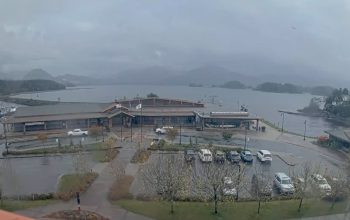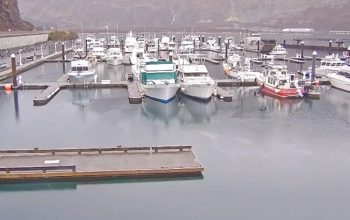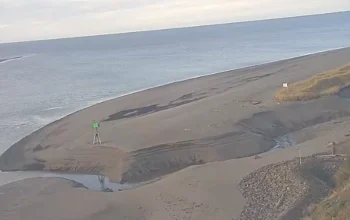Webcams Near Lake Charles
Lake Charles Louisiana: I-10 Corridor
Lake Charles, Louisiana, is a lively city in the southwestern part of the state. Known for its rich history, scenic landscapes, and strong industrial base, Lake Charles is a key city in the region. This post will explore the city’s history, geography, climate, and the benefits of live weather cams, which provide real-time views of the area’s weather conditions.
History of Lake Charles
Lake Charles has a long history dating back to the early 19th century. French settlers first established the area, calling it Charleston. The city was officially incorporated in 1857. However, to avoid confusion with Charleston, South Carolina, the name was changed to Lake Charles in 1861.
The city’s location on Lake Charles and the Calcasieu River helped it grow quickly in the late 1800s. Timber became the driving force of the local economy as sawmills and logging operations popped up around the area. The nearby rivers and lakes made it easy to transport lumber to other parts of the country. Railroads also arrived in the late 1800s, linking Lake Charles to other major Southern cities and helping the city export goods more efficiently.
In the early 20th century, the city’s focus shifted from timber to oil and petrochemicals. The discovery of oil and the construction of refineries transformed Lake Charles into an industrial hub. Refineries and petrochemical plants brought jobs and economic growth, further solidifying the city’s importance in Louisiana.
Despite facing challenges from hurricanes and economic shifts, Lake Charles has remained a vital city in Louisiana. Its economy is now a mix of industry, tourism, and gaming, making it one of the state’s major urban centers.
Geography of Lake Charles
Lake Charles is located in Calcasieu Parish in southwestern Louisiana, near the Texas border. The city covers around 44.8 square miles, with Lake Charles, the Calcasieu River, and Prien Lake forming its natural landscape. These water bodies play a significant role in the city’s economy and recreational activities.
The Port of Lake Charles is one of the largest in the state, handling a large volume of cargo each year. The waterways allow the transport of oil, gas, and other products. The city’s location also makes it a prime spot for outdoor activities like fishing, boating, and birdwatching.
Surrounding Lake Charles Louisiana are marshlands and wetlands, which provide habitats for a variety of wildlife. Many outdoor enthusiasts enjoy exploring the nearby Creole Nature Trail, known for its stunning views of local ecosystems. These natural features make Lake Charles a unique blend of industrial power and natural beauty.
Climate of Lake Charles
Lake Charles has a humid subtropical climate, which means hot, humid summers and mild winters. The Gulf of Mexico, located to the south, influences the city’s weather.
- Summer: Summers in Lake Charles are hot, with temperatures often reaching the mid-to-high 90s (°F). Humidity is high, making it feel warmer. Afternoon thunderstorms are common, especially in July and August.
- Winter: Winters are mild, with temperatures ranging from the low 40s to mid-60s (°F). Cold fronts sometimes bring cooler temperatures, but snow is rare.
- Rainfall: Lake Charles gets heavy rainfall, especially in August and September. The city is prone to hurricanes and tropical storms, which can bring significant rain and wind.
Due to its location, Lake Charles is vulnerable to hurricanes. The city has been hit by several major storms, including Hurricanes Rita and Laura. These storms caused severe damage, but the city has shown resilience in rebuilding.
Live Weather Cams in Lake Charles
Lake Charles Louisiana has several live weather cams that provide real-time views of the city. These cameras are placed at key locations and give locals and visitors important information about weather conditions.
Benefits of Live Weather Cams
- Real-Time Monitoring: Live weather cams show current weather conditions instantly. Residents can quickly check the skies to see if it’s raining or clear. This helps people plan daily activities, such as going for a walk or driving to work.
- Storm Tracking: Live cams are especially helpful during storms. People can watch the cameras to see approaching clouds, heavy rain, or wind gusts. During hurricanes, live cams allow residents to stay informed about the storm’s impact on different parts of the city.
- Flood Monitoring: Lake Charles often experiences flooding during heavy rains. Live weather cams make it easy to check water levels in low-lying areas. This helps residents avoid flooded roads or areas that might be dangerous.
- Tourism and Scenic Views: Visitors can also use live weather cams to enjoy the city’s scenic views. The cameras show beautiful sights of Lake Charles and other outdoor spots, making them a perfect way for tourists to explore the city before they arrive.
- Road Safety: Live weather cams positioned along major roads help drivers check road conditions. If rain, fog, or wind makes driving hazardous, people can adjust their travel plans or find safer routes.
Lake Charles: Industrial Haven on The Gulf
Lake Charles Louisiana, is a city with deep roots in industry, a beautiful natural landscape, and a climate influenced by the Gulf of Mexico. Its history stretches back to the 19th century, and its economy continues to thrive through oil, petrochemicals, tourism, and outdoor activities.
The addition of live weather cams gives both residents and visitors a real-time look at local weather. These cameras offer many benefits, from tracking storms to enjoying scenic views. As Lake Charles continues to grow, these live cams will remain an important tool for staying informed and prepared.


